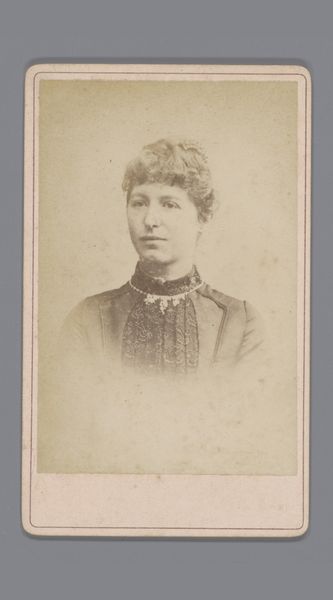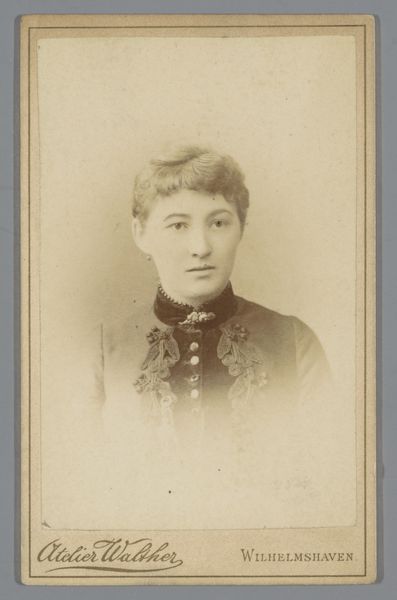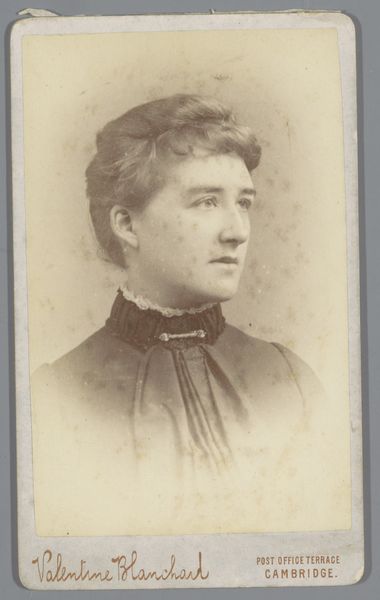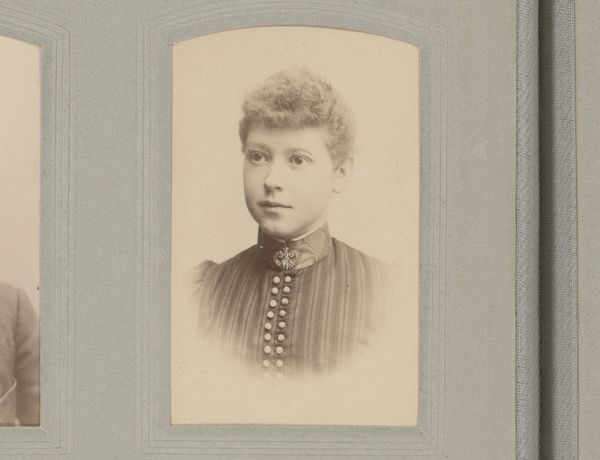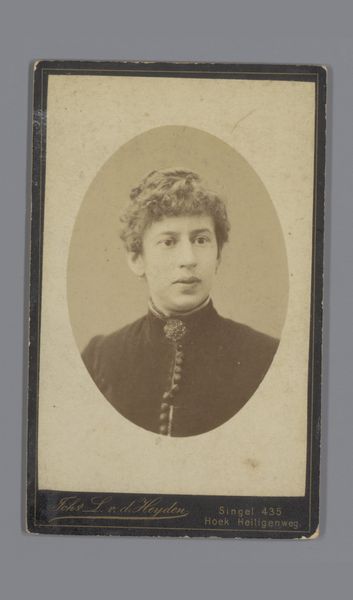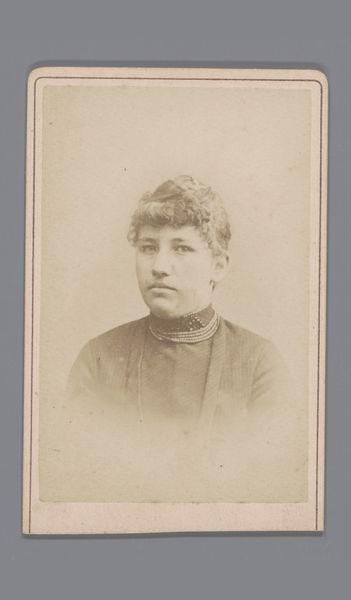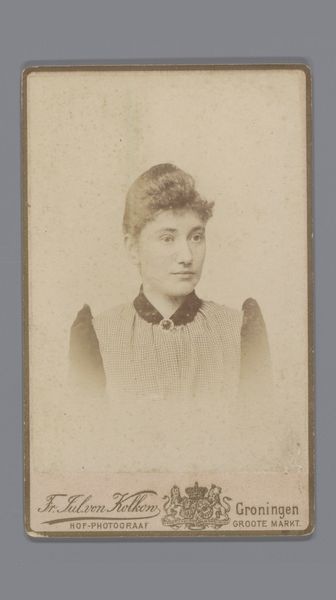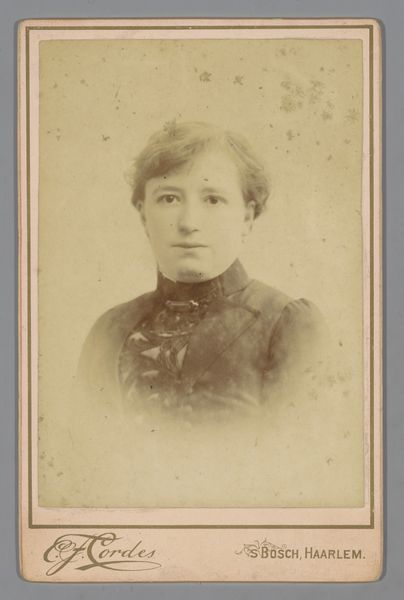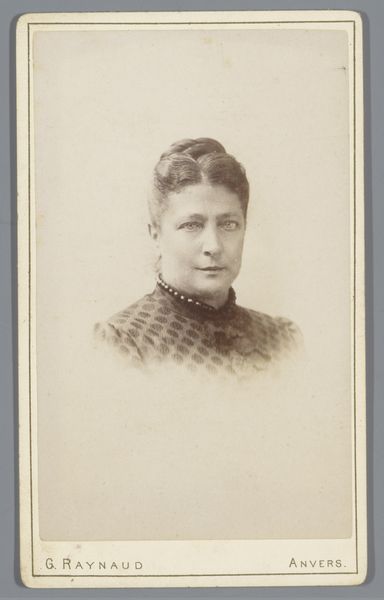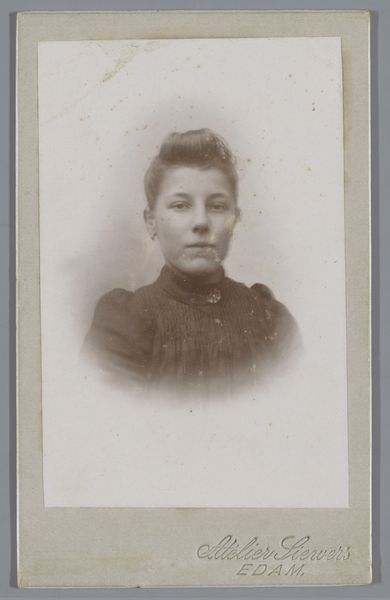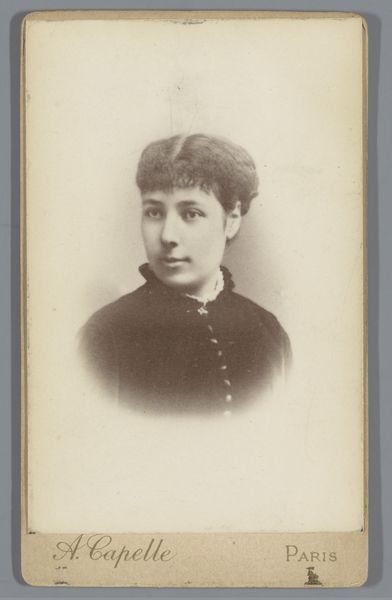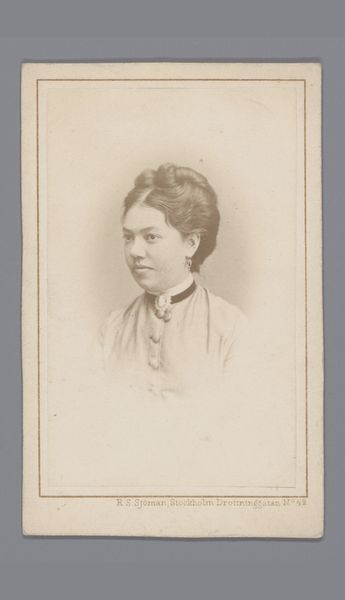
photography, gelatin-silver-print
#
portrait
#
pictorialism
#
photography
#
historical photography
#
historical fashion
#
gelatin-silver-print
#
19th century
#
genre-painting
#
academic-art
Dimensions: height 103 mm, width 64 mm
Copyright: Rijks Museum: Open Domain
Curator: Before us is an intriguing gelatin silver print titled "Portret van een onbekende jonge vrouw," dating between 1884 and 1913, part of the Rijksmuseum's collection and created by Adolphe Zimmermans. Editor: There's a delicate wistfulness to this image; the oval framing and soft focus give it an almost dreamlike quality. I’m immediately drawn to her stoic gaze. Curator: Indeed. Consider the period, though. Studio portraits like this were about constructing a specific public identity, particularly for women. Her gaze, though seemingly wistful to us now, was carefully posed, likely reflecting societal expectations of demureness and respectability. Editor: Absolutely, and that raises questions about power. Who controls the narrative? Is this an accurate portrayal of the woman, or a constructed performance of femininity, influenced by patriarchal constraints inherent within that 19th-century, Dutch society? It reflects academic artistic conventions prevalent during that era. Curator: The setting, likely a photographer's studio, was also a key aspect of the artwork. Think about the accessibility of photography at that time, and the social implications for its sitters, as they became portrayed for wider viewing. This work allows us to examine how the democratization of photography coincided with shifts in self-perception and the very idea of historical imagery and representation. Editor: And the fashion! The high-collared dress and subtle ornamentation speak volumes. I'm curious about the implications of fashion during that period. The rigid societal constraints imposed upon women, reflecting expectations of modesty and domesticity. The sitter presents as wealthy based on these trappings, and class differences clearly shaped identity. Curator: Right. But such a reading must acknowledge that wealth in 19th century Europe, or anywhere else for that matter, depended on specific political economies. The photographic process itself, its industrial aspects, colonialism... it is worth remembering the portrait is only the immediate visible part. Editor: A powerful reminder that a seemingly simple portrait is interwoven with so much social, cultural, and historical context. We're prompted to remember to think of these photographic glimpses as constructed, laden with messaging beyond our initial, modern reading. Curator: A nuanced and vital reflection that pushes us to rethink not only her identity, but the medium's social agency during a time of rapid change.
Comments
No comments
Be the first to comment and join the conversation on the ultimate creative platform.
